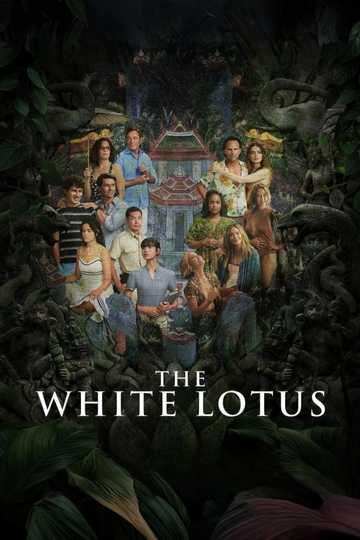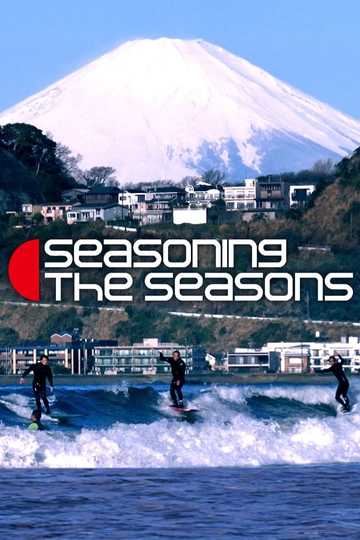Season 4 Episodes
1. Tsugaru: Enduring Winter for the Hot Festival
During the region's short summer, local people are caught up in the festival fever. The Tsugaru Plain, at the base of Mt. Iwaki, is famous for incredible snowfalls. The harsh winter lasts nearly half the year, and when the short summer comes around, the passion of local people floods out. After withstanding the trials of nature, they live life to the full during the season of the sun. In a few dozen days, summer is over. We take a look at the festival season in Tsugaru when the land shimmers in the summer heat and local people make the most of the mild weather.
2. Tosa: Land of Passionate People
The average temperature is over 17℃. And, here in Shikoku's Kochi Prefecture, there's also glaring sunlight and over 3m/year of rain - a lot even for Japan. Long ago, this area was known as 'Tosa'. Tosa's special climate gave its people a unique temperament.Even today, the men of Tosa are 'igosso' (stubborn), and the women are 'hachikin' (strong-willed). These strongly individualistic, goal-oriented people are Tosa's life force. They still have their unique traditions from long ago.
3. The Gods of Japan: An Infinite World of Spirits
In various different situations, Japanese people often pray to the gods. Their prayers may range from requests for help with major, life-changing events or they may be simple prayers for peace and security in daily life. Religious rituals also vary widely depending on the region. We travel across Japan, visiting shrines and other sacred sites to introduce the sometimes mysterious world of traditional religious observance in Japan.
4. Aizu: Land of the Last Samurai
Aizu is roughly 300 kilometers north of Tokyo. It is a region west of Fukushima Prefecture. Around 150 years ago, Aizu was defeated in a civil war, beginning a road of hardship. The skills to survive a tough environment and to care for others thrive in Aizu. From parents to children, from predecessors to successors, the pride of Aizu is passed down. Fondness for lords long-gone still remains in people's hearts. This is a story of Aizu, where the spirit of samurai from ages ago still lives on.
5. Yakushima: Island of Primeval Forests
The ancient natural environment on Yakushima Island, in Kagoshima Prefecture, is registered as a World Heritage Site. It is said that rain falls 35 days in a month on this island. Yakushima is located about 65 kilometers south of Cape Sata, the southernmost part of Kyushu. The island is about 30 kilometers in diameter, and is almost entirely mountainous, with 2000-meter high mountains towering above the shoreline. The island's forests are home to trees more than a thousand years old. The mountains and the rain. The people and their prayers. This is the story of life in Yakushima.
6. Sanriku Railway: Back from the Brink
The Sanriku Railway in Iwate Prefecture is a lifeline, playing an important role in the local community. The train goes up and down the line, and the arrival of the train is part of the rhythm of life. In March 2011, the railway was completely destroyed by the tsunami that followed the Great Eastern Japan Earthquake. The road to recovery was a difficult one, and at one point, there was even talk of abolishing the line. The railway is now back on track, having finally resumed full service. We look back on the slow but steady restoration of the Sanriku Railway, over a period of 3 years.
7. Nihonbashi: The Bridge at the Center of Japanese Commerce
Tokyo's Chuo District, facing the ocean. Roughly 4 kilometers from the harbor, spanning a tributary river flowing into Tokyo Bay, is the bridge of Nihonbashi. In the center of the bridge is the road origin marker. All the roads connecting Tokyo to cities across Japan begin here. The area around the bridge has long flourished as a center of Japanese commerce. Wonderful old culture and traditions remain in this town. This is a story of Tokyo's Nihonbashi area.
8. The Shikoku Pilgrimage
1,200 years ago, Kukai, a well-known Japanese monk, made a pilgrimage through 88 sacred sites In the Japanese island of Shikoku. The route through all 88 sites is 1,400 kilometers long and loops around the island. Pilgrim's still come, with both anxiety and hope, to follow in Kukai's footsteps. Kukai told his followers that enlightenment knows one's own heart. The Shikoku Pilgrimage is a journey to find oneself, shedding one's spiritual baggage simply by walking. The pilgrim's journey around Shikoku brings unexpected encounters and lifelong memories.
9. Dewa Sanzan: Mystic Mountains of Prayers
Dewa Sanzan is located in the center of Yamagata Prefecture, in the Tohoku region of Japan. Mt. Haguro, Mt. Gassan and Mt. Yudono. Collectively, these 3 mountains are called Dewa Sanzan. The pilgrimage of Dewa Sanzan symbolizes the death and rebirth of a person. It is believed that something important can be obtained by climbing the mountains.
10. Hakata Yamakasa: A Festival to Live For
Located in Fukuoka Prefecture on the island of Kyushu, the city is a harbor town facing Hakata Bay. If you cross the sea to the northwest, you'll find the Korean Peninsula and China. The area has flourished as a gateway to the continent for many years. In the summer, there is a festival that the men of this town practically live for. Hakata Gion Yamakasa is the summer festival for Hakata's local deity, Kushida Shrine.
11. A Sushi Tour Around Japan
Sushi is one of Japan's most renowned foods. Today, it is known the world over. The chef creates a bite-sized mouthful of sushi from fresh fish and vinegared rice. However, this is more properly called edo-mae-zushi, and it is just one of many sushi types. The Japanese diet has long been rich in fish. Sushi was originally made by naturally fermenting raw fish so it would keep for the long-term. Sushi then developed into various different regional styles as vegetables and other local produce were added to the dish. Japanese people often find eating sushi lifts their spirits. We're going to take a closer look at this delicious, versatile food.
12. Osaka: City of Waterways
Osaka is located in an estuary, where several rivers flow into the Osaka Bay. The waterways that stem from these rivers have supported the city's development. Intertwining within the landscape of the city are its many bridges. Because of that, Osaka is sometimes called a "city of 8 hundred and 8 bridges". Join us as we take a voyage down the always-lively Osaka, a city of waterways.
13. Owara Kaze no Bon: A Festival to Calm the Wind Gods
On the north side of Japan's main island, in the foothills of the Hida Mountains, lies Yatsuo Town, Toyama Prefecture. Every year, the 'Owara Kaze no Bon' Festival begins on September 1 and lasts for 3 days. During Owara Kaze no Bon, the people dance day and night, and the whole town livens up. The festival has a 300-year history here. It is thought to have begun with people seeking to appease the wind gods. The festival dances are sensual, graceful, yet proud and the dancers are boys, girls and young people under 30. Adults play traditional musical instruments such as the 'kokyu' and 'shamisen'. Owara Kaze no Bon, signifies summer's end. This is the story of the people behind Japan's most tranquil festival.
14. The Kunisaki Peninsula: Mystical Festivals in a Spiritual Land
The Kunisaki Peninsula is located in the northeast corner of Kyushu, one of Japan's 4 main islands. The round peninsula sticking out into the sea is volcanic. There is very little rain and the mountains are rocky, meaning rainwater soon runs off. Strong faith supports the local people who live in this dry, difficult environment. We visit the Kunisaki Peninsula where unique local rites of prayer have survived down the ages.
15. Tsukemono: Japan's Pickled Soul Food
Tsukemono is a simple food made by pickling vegetables and other ingredients in seasonings such as salt and vinegar. It started as a preserved food, and some are made by fermentation. It is never the main dish, but is an essential part of the Japanese diet. Every region has its own special tsukemono. Tsukemono can be enjoyed not only for its taste, but also for its flavor, color and the sound it makes when chewed. We take a journey of tsukemono around Japan.
16. Kanazawa: An Eternal Love of Beauty and Culture
Kanazawa is in Ishikawa Prefecture, facing the Sea of Japan in the north. Here, far from Kyoto and Tokyo, a great city was built in the age of the samurai, boasting 300 years of history. The first lord of this vast land, Maeda Toshiie, spared no effort in promoting culture such as crafts and the performing arts. This policy was carried on by his successors, and a small farming town transformed into a flourishing city of culture. An obsession with beauty has always thrived here. Hospitality that gratifies all the senses awaits you.
17. Notsuke Peninsula: Harsh Winters and Rich Seas
Japan's northernmost major island - Hokkaido. Stretching out into the sea on the island's east coast is the Notsuke Peninsula. It is 26 kilometers long, but just 20 meters wide at its narrowest point. Made from sand carried on the ocean currents, its shape is gradually changing. Here lies a paradise for both birds and wild animals. When the wind is just right, fishermen can take countless riches from the sea. During the winter, the temperature remains below zero for months on end. Everything is frozen by the snow and icy winds. Over the years, people have continued to live here, despite the harsh conditions. This is the story of a peninsula surrounded by snow and ice.
18. Kinosaki Onsen: A Town of Hot Springs
Kinosaki Onsen is a small town faces the Sea of Japan to its north, and is spread out between mountains. It is a hot springs, or an "Onsen" resort in Hyogo Prefecture. About 100 "Ryokan" or traditional Japanese inns line a 1-kilometer street, which are visited by 1 million tourists a year. The way to enjoy the hot springs here is to visit all of the 7 public baths in the town. A sparkling otherworldly thermal utopia built in the mountains. In this episode of Seasoning the Seasons, we visit a small hot springs resort that relaxes the body and mind.








































